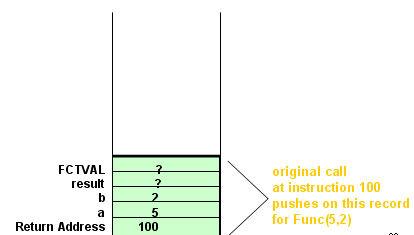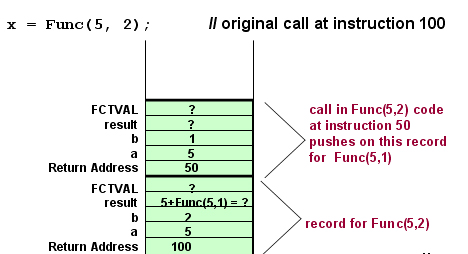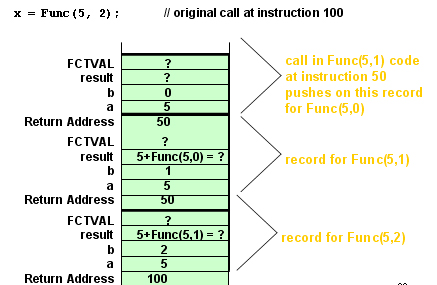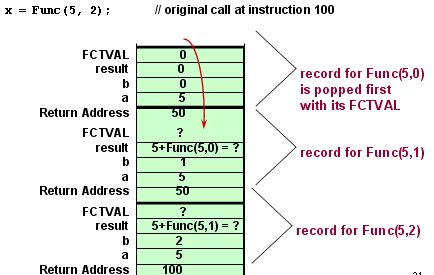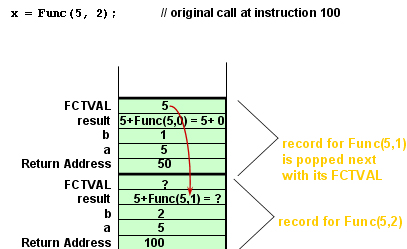Activation Records
|
1) The activation record stores the return address for this function call, and also the parameters, local variables, and the functionís return value, if non-void. It is pushed onto typically an "Activation Stack Record (run-time stack)". 2)The activation record for a particular function call is popped off the run-time stack when the final closing brace in the function code is reached, or when a return statement is reached in the function code. 3)At this time the functionís return value, if non-void, is brought back to the calling block return address for use there. |
ExampleSuppose we have the following recursive function.....
// Another recursive function
int Func ( int a, int b )
// Pre: a and b have been assigned values
// Post: Function value = ??
{
int result;
if ( b == 0 ) // base case
result = 0;
else if ( b > 0 ) // first general case
result = a + Func ( a , b - 1 ) ) ; // instruction 50
else // second general case
result = Func ( - a , - b ) ; // instruction 70
return result;
}
|
